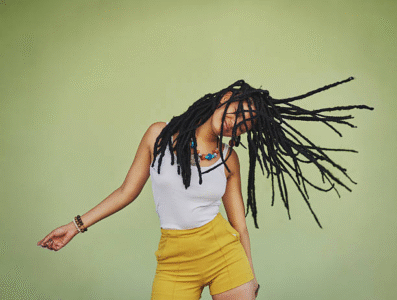Locs aren’t just a trend; they are a deeply personal and cultural expression of identity, heritage, and style. Whether you’re just beginning your loc journey, looking to change styles, or a hairstylist guiding others, choosing between dreadlocks, Afro locs, and Rasta hairstyles can be both exciting and overwhelming.
This guide explores a deeper look at dreadlocks, Afro locs, and Rasta hair locs, helping you understand their origins, styling methods, and maintenance requirements, and which one best fits your personality, lifestyle, and hair texture.
This article is designed for both hair enthusiasts and professional locticians.
If you’re considering starting locs, this is the perfect place to learn more before making a decision.
A Deeper Look at Dreadlocks, Afro Locs, and Rasta Hair.
Dreadlocks: Timeless, Spiritual & Globally Rooted
Dreadlocks, or “locs,” have existed across cultures from Ancient Egypt to the Maasai in Kenya and Hindu Sadhus in India. Today, they’re popular worldwide for both aesthetic and spiritual reasons.
Key Features of Dreadlocks
- Formed through freeform methods or techniques like backcombing, twisting, or crocheting
- Suited for most hair types but locks fastest on kinky/coily textures
- Can be styled neatly or left natural and freeform
- Often carry spiritual, cultural, or personal symbolism
Best For:
Those seeking a natural, authentic, or spiritual hair journey with a medium- to long-term commitment.
Learn more about the history and meaning of dreadlocks from The Cultural Roots of Dreadlocks
Afro Locs: Trendy, Sculpted, and Styled Forward
Afro locs are a modern, defined loc style tailored specifically for Afro-textured hair. They combine structure and style while celebrating the texture and volume of African hair.
Key Features of Afro Locs
- Created using sectioning, palm rolling, interlocking, or crochet methods
- Designed to look symmetrical, neat, and fashionable
- Easy to accessorize with color, cuffs, and braids
- Require scheduled salon maintenance every 4–6 weeks
Best For:
Style-conscious individuals who want customised starter locs with defined partings and long-term versatility.
For professional techniques, explore the Guide to Starting Afro Locs
Rasta Locs: Natural, Symbolic & Deeply Spiritual
Rasta locs go beyond appearance; they’re an extension of the Rastafari faith, a spiritual and social movement that originated in Jamaica in the 1930s. Followers allow their hair to loc naturally as a sign of their spiritual covenant.
Key Features of Rasta Locs
- Formed without combing, trimming, or artificial styling
- Represents purity, resistance to Western ideals (Babylon), and connection to Jah (God)
- Grows freely with no manipulation or salon intervention
- Rarely altered for fashion purposes
Best For:
Those who identify with or deeply respect the Rastafarian faith, or individuals committed to a natural, freeform lifestyle.
Explore the religious significance of Rastafarianism
Comparison Table: Which Loc Style Fits You Best?
| Feature | Dreadlocks | Afro Locs | Rasta Locs |
| Cultural Origin | Global & Historical | Afrocentric/Modern | Rastafari (Jamaica) |
| Maintenance | Moderate | High (salon upkeep) | Low (natural upkeep) |
| Styling Options | Versatile | Very versatile | Minimal |
| Symbolism | Personal/Cultural | Aesthetic & Identity | Spiritual/Religious |
| Installation | Salon or DIY | Salon-based | Natural formation only |
| Commitment | Medium- to Long-Term | Long-Term | Lifelong/Spiritual |
How to Choose the Right Loc Style for You
Ask yourself these key questions:
- Do you want a low-maintenance or styled loc look?
Afro locs require more upkeep, while Rasta locs are left freeform. - Is culture or spirituality part of your reason for getting locs?
If so, Rasta or traditional dreadlocks may align with your values. - What is your hair texture?
Afro locs are tailored for 4C hair types, while dreadlocks work on many textures. - Do you want freedom or fashion?
Afro locs give styling control; Rasta locs embrace spiritual surrender. - Are you ready for the commitment?
Locs are not just hairstyles; they’re a lifestyle shift.
Conclusion
Choosing between dreadlocks, Afro locs, and Rasta locs is more than picking a hairstyle; it’s about choosing a lifestyle, honouring your roots, and making a statement that reflects your journey.
As a hair lover, this is your chance to embrace your crown unapologetically. As a hairdresser, understanding these styles gives you the insight to serve your clients with expertise and cultural respect.
Ready to begin your loc journey? Start by consulting a professional hairstylist, researching the cultural roots, and, most importantly, listening to your hair.

